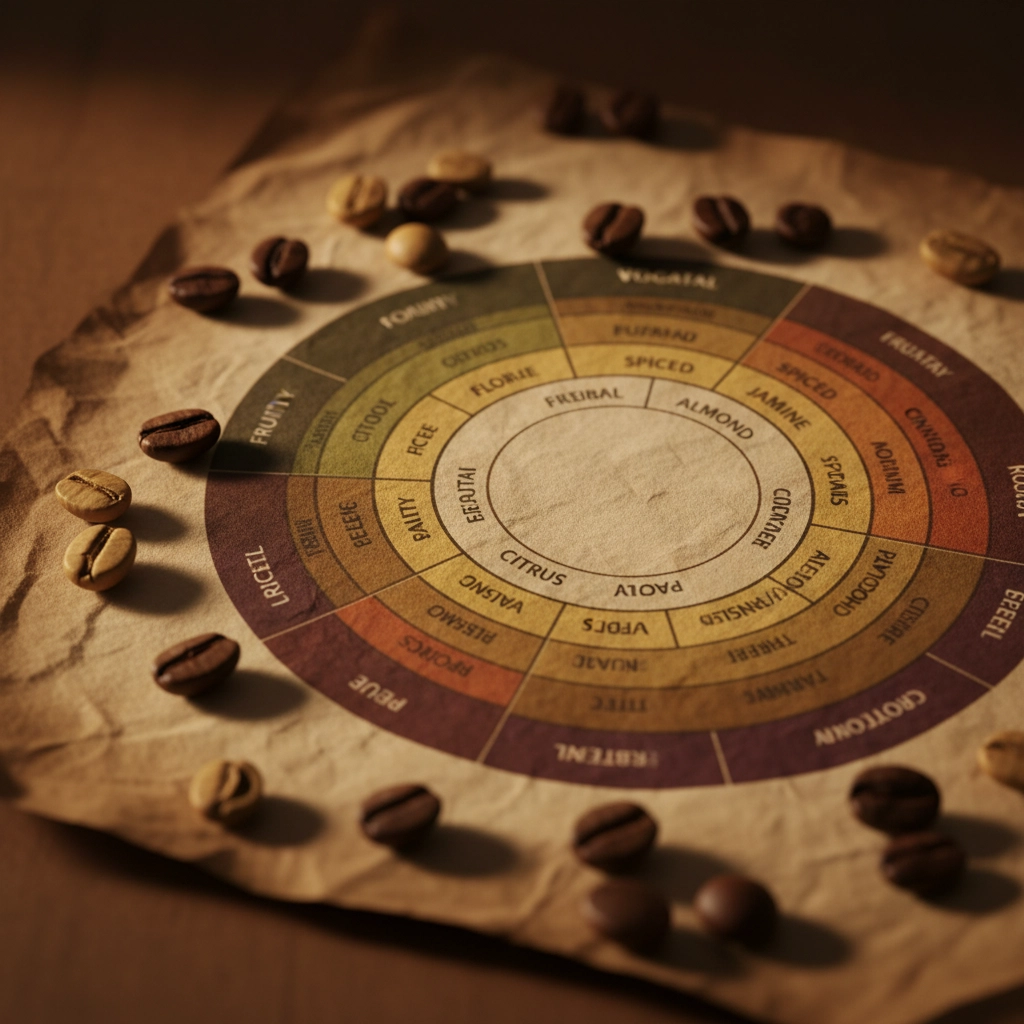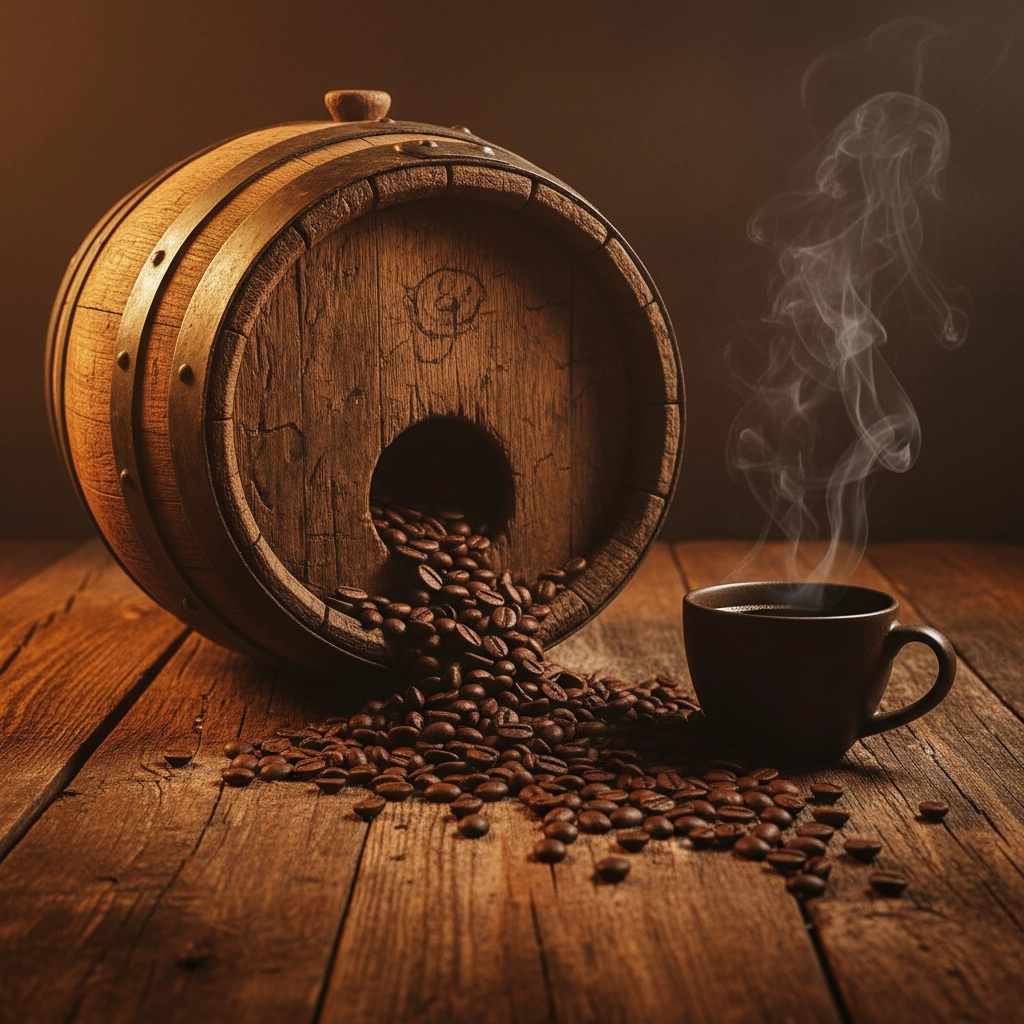Ever wondered why some coffee pros can taste "hints of dark chocolate with subtle notes of caramel and a bright citrus finish" while you're just thinking "yep, tastes like coffee"? Don't worry – you're not missing some secret superpower. The coffee flavor wheel is here to help you unlock those hidden flavors that are already dancing on your palate.
Think of the coffee flavor wheel as your personal translator for the complex language of coffee. It's a visual roadmap that transforms those mysterious "tasting notes" from confusing jargon into something you can actually understand and use.
What Exactly Is the Coffee Flavor Wheel?
The coffee flavor wheel is essentially a circular chart that organizes coffee flavors from broad, easy-to-identify categories down to incredibly specific taste descriptors. Picture it like a dartboard – the center contains general flavors everyone can recognize, while the outer rings get more precise and nuanced.
Created by coffee professionals and backed by the World Coffee Research Sensory Lexicon, this tool standardizes how we talk about coffee flavors. Instead of relying on vague descriptions like "it tastes good," the wheel gives us a shared vocabulary that actually means something.

How the Wheel Works: From Simple to Sophisticated
The beauty of the coffee flavor wheel lies in its three-layer structure. The innermost ring contains broad categories like sweet, fruity, roasted, nutty, floral, and spice. These are flavors most people can spot without breaking a sweat.
The middle ring gets more specific. If you identify something fruity, you can narrow it down to citrus, berry, tropical fruit, or stone fruit. Take our Breakfast Blend – many coffee lovers notice its bright, fruity characteristics right away.
The outer ring is where things get really interesting. Here, "citrus" splits into lime, lemon, orange, and grapefruit. "Berry" might become blueberry, blackberry, or raspberry. This is where you can get impressively specific about what you're tasting.
Your Step-by-Step Guide to Using the Flavor Wheel
Start with the Aroma
Before you even take that first sip, give your coffee a good smell. The aroma tells half the story. Smell the dry grounds first, then again after you've added hot water. This isn't just coffee snobbery – your nose can detect thousands more flavors than your taste buds can.
Our French Roast is perfect for practicing this. Its bold, roasted aroma makes it easy to identify those deeper, smokier notes right from the start.
Navigate from Center Outward
Here's where the wheel becomes your best friend. Start in the center and work your way out. Don't try to jump straight to "Meyer lemon with bergamot undertones." Begin with what you can clearly identify – maybe it's sweet, or nutty, or floral.
Let's say you're tasting our Asian Plateau Blend. You might start by thinking "this tastes earthy and herbal." Great! Now look at the wheel's middle ring under those categories. Can you narrow it down further?

Pay Attention to Your First Impressions
Your initial reaction is often the most accurate. When you take that first sip, what immediately comes to mind? Maybe it reminds you of chocolate, or perhaps there's something citrusy about it. Trust those instincts – they're your personal flavor database at work.
Consider the Coffee's Body and Mouthfeel
The flavor wheel isn't just about taste – it also helps describe how coffee feels in your mouth. Does it feel light and tea-like, or rich and creamy? Our Gourmet Donut Shop blend has a medium body that pairs beautifully with its sweet, bakery-inspired flavor notes.
Common Flavor Categories Explained
Sweet: These aren't just sugary flavors. Coffee sweetness can range from brown sugar and caramel to honey and vanilla. Even without adding sweetener, many coffees have natural sweetness from the beans themselves.
Fruity: This is where coffee gets really exciting. Depending on where and how the beans were grown and processed, you might taste everything from bright citrus to deep berry flavors. Single-origin coffees often showcase these characteristics beautifully.
Nutty: Think almonds, hazelnuts, peanuts, or walnuts. These flavors often come from the roasting process and are especially common in medium roasts.
Roasted: These are the flavors created by the roasting process itself – think toasted bread, caramel, or even smoky notes in darker roasts.
Floral: Light, delicate notes that might remind you of jasmine, rose, or other flowers. These are often found in lighter roasts from certain growing regions.

Special Flavors: When Coffee Gets Creative
Some coffees push boundaries with unique processing methods or aging techniques. Take our Whiskey Barrel Aged coffee, for example. The beans are aged in actual whiskey barrels, creating complex flavors that might include vanilla, oak, and yes, subtle whiskey notes. This is where the flavor wheel really shines – helping you identify those unexpected tastes that make specialty coffee so interesting.
Developing Your Palate: Practice Makes Perfect
Remember, using the flavor wheel effectively isn't about having a "sophisticated palate" – it's about paying attention and practicing. Start with coffees that have pronounced characteristics. Lighter roasts often showcase origin flavors, while darker roasts emphasize roasted notes.
Try tasting the same coffee at different temperatures. As it cools, different flavors become more apparent. What you taste at piping hot might be completely different from what emerges as it reaches room temperature.

Don't Overthink It
Here's the most important thing to remember: there are no wrong answers when using the coffee flavor wheel. If you taste something that reminds you of your grandmother's apple pie, that's a valid tasting note, even if the "experts" describe it differently. The wheel is a tool to help you articulate your experience, not to tell you what you should be tasting.
Your personal flavor memories and associations matter. If a coffee reminds you of camping trips because it has smoky notes, that's meaningful to you. The wheel just helps you communicate that experience more precisely.
Making It Practical
You don't need to become a professional cupper to benefit from understanding tasting notes. Next time you're choosing between different coffees, look at their flavor descriptions. If you love citrusy, bright flavors, look for terms like "lemon," "orange," or "grapefruit." If you prefer rich, comforting flavors, seek out "chocolate," "caramel," or "nutty" descriptors.
The coffee flavor wheel transforms coffee from a simple caffeine delivery system into a rich sensory experience. It's not about impressing anyone with fancy vocabulary – it's about discovering the incredible complexity that's been in your cup all along.

Start simple, stay curious, and remember that every coffee professional started exactly where you are now. The difference is just practice and paying attention to what you're already tasting. Your palate is more capable than you think – the flavor wheel just gives you the language to express what it's telling you.




